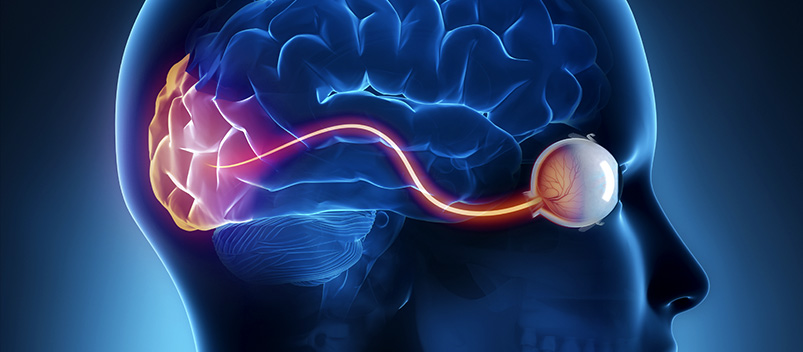visual evoked potential study
What is a Visual Evoked Potential? (VEP)
An evoked potential caused by a visual stimulus is known as a visual evoked potential. Responses from electrodes placed on the back of your head are recorded and shown as a reading on an electroencephalogram (EEG). These reactions are often generated by the occipital cortex, the part of the brain responsible for receiving and processing visual inputs.
When you are experiencing changes in your eyesight that may be caused by abnormalities along the routes of particular nerves, your doctor may advise you to get a VEP test. Some of these symptoms may include: loss of vision (painful or non-painful); double vision; blurred vision; flashing lights; colour vision changes; or weakness of the eyes, limbs, or legs.
These changes are often difficult to notice during a clinical examination. In general, the test is beneficial for diagnosing abnormalities with the optic nerve. Because this nerve helps convey impulses that enable us to see, testing it allows the doctor to examine how your visual system reacts to light. The test is also beneficial for checking vision in children and individuals who are unable to read eye charts.
What does the VEP test look for?
The VEP quantifies the amount of time it takes for visual input to pass from the eye to the occipital brain. Multiple sclerosis, for example, may impair the insulating layer surrounding nerve cells in the brain and spinal cord (known as the myelin sheath). This implies that electrical impulses from the eyes take longer to travel, resulting in an aberrant VEP. A normal VEP may be quite sensitive in excluding an optic nerve injury along with its circuits in the anterior hemisphere of the brain.
How to prepare for a VEP test?
You will be instructed on how to prepare for the exam. This will be determined by where you will have the test performed. Some of the things you may need to accomplish are as follows:
Avoid hair chemicals, oils, and lotions by washing your hair the night before the procedure. If you wear glasses, be sure to bring them with you to the exam. Prior to the test, you should be able to eat normal food and take your usual medicines. Any drugs that may cause drowsiness, should be avoided. On the day of the test, you should also inform the technician if you have any eye disorders, such as cataracts or glaucoma, since they might interfere with the test.
What exactly occurs during a VEP test?
- The process is completely painless and non-invasive.
- To begin, wires will be attached to the top of your skull in order to detect brain waves.
- A technician will provide you with more instructions on what to do throughout the exam. Typically, each eye is evaluated independently.
- It is important that you cooperate with the professional doing the test and that you be able to fix your eyesight in a certain location. You will be asked to stare at a screen that looks like a television screen and has numerous visual patterns.
- Readings will be taken using the wires on top of your head.
- The adhesive and wires are removed from your skull after the procedure.
Are there any side effects associated with the VEP test?
This technique almost never has any negative effects. It is a painless procedure with few complications, other than slight skin irritation from the electrodes.
Clinical use of the VEP
This technique almost never has any negative effects. It is a painless procedure with few complications, other than slight skin irritation from the electrodes.
- The VEP is a reliable and standardized test of optic nerve function.
- It detects lesions affecting the visual pathway in front of the optic chiasm more accurately than magnetic resonance imaging.
- It is often less expensive than other studies such as MRI.
For more information & consultation on Visual Evoked Potential Study, Call our expert Dr. Amit Shah – Consultant Neurologist in Mumbai on 98195 61456 or Book an Appointment

